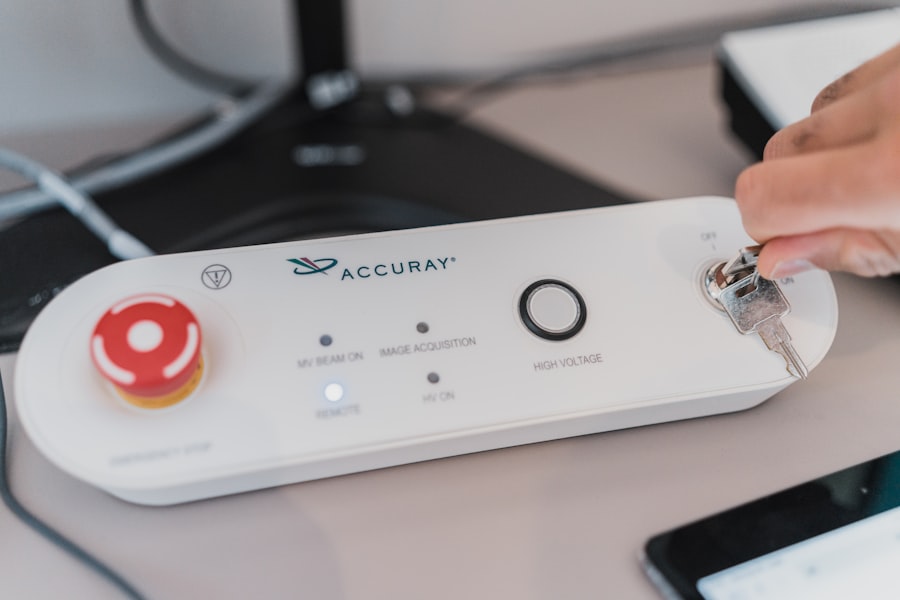Laser hair removal is a popular cosmetic procedure that has gained traction over the years due to its effectiveness and long-lasting results. At its core, this technique utilizes concentrated light beams to target hair follicles, effectively inhibiting future hair growth. The science behind this method is rooted in the principles of selective photothermolysis, which refers to the process where specific wavelengths of light are absorbed by particular chromophores—in this case, the melanin in hair.
By understanding this fundamental concept, you can appreciate how laser hair removal can provide a more permanent solution compared to traditional methods like shaving or waxing.
Different types of lasers emit varying wavelengths of light, which can affect their efficacy on different skin and hair types.
For instance, some lasers are more effective on darker hair and lighter skin, while others are designed to work on a broader range of skin tones and hair colors. This variability underscores the importance of selecting the right laser for your specific needs, especially if you are considering a DIY approach to laser hair removal.
Key Takeaways
- Laser hair removal targets hair follicles to inhibit future hair growth
- Melanin in the hair follicle absorbs the laser light, damaging the follicle
- DIY laser hair removal can pose safety risks and should be approached with caution
- Choosing the right laser for DIY hair removal depends on skin tone and hair color
- Tips for effective DIY laser hair removal include shaving before treatment and avoiding sun exposure
How Laser Hair Removal Works on Hair Follicles
How Laser Hair Removal Works
When you undergo laser hair removal, the process begins with the laser emitting a concentrated beam of light that penetrates the skin and is absorbed by the melanin in the hair follicles. This absorption generates heat, which damages the follicle and inhibits its ability to produce new hair.
The Importance of the Hair Growth Cycle
The effectiveness of this method lies in its ability to target hair during the anagen phase, or the active growth phase, when the hair is most susceptible to destruction. Understanding this cycle is crucial for optimizing your results, as multiple sessions may be necessary to achieve the desired outcome.
Why Multiple Sessions Are Necessary
As you consider DIY laser hair removal, it’s essential to recognize that not all hair follicles are in the same growth phase at any given time. This means that multiple treatments spaced several weeks apart are typically required to ensure that all hair follicles are effectively targeted.
Achieving Smooth, Hair-Free Skin
By being patient and consistent with your treatments, you can maximize the chances of achieving smooth, hair-free skin over time.
The Role of Melanin in Laser Hair Removal

Melanin plays a pivotal role in the effectiveness of laser hair removal. This natural pigment is responsible for the color of your skin and hair, and it absorbs light energy emitted by the laser. The greater the contrast between your skin tone and hair color, the more effective the treatment tends to be.
For instance, individuals with dark hair and light skin often experience optimal results because the laser can easily differentiate between the melanin in the hair and the surrounding skin. However, if you have lighter hair or darker skin, you may face challenges with traditional laser hair removal methods. In such cases, specialized lasers designed for different skin tones and hair colors may be necessary.
As you explore DIY options, it’s crucial to understand how melanin affects your treatment’s efficacy and to choose a device that aligns with your unique characteristics.
Safety and Risks of DIY Laser Hair Removal
| Aspect | Information |
|---|---|
| Effectiveness | Variable results, may not work for all hair and skin types |
| Safety | Potential for burns, skin irritation, and pigmentation changes |
| Risks | Possible eye damage if not used properly |
| Cost | Initial investment in laser device, potential long-term savings compared to professional treatments |
| Time | Requires multiple sessions over several weeks for best results |
While DIY laser hair removal can be an appealing option for those looking to save time and money, it is essential to approach it with caution. One of the primary concerns is safety; improper use of laser devices can lead to skin damage, burns, or even scarring. Unlike professional treatments administered by trained technicians, DIY methods lack the oversight and expertise that ensure safe application.
Therefore, before embarking on your DIY journey, it’s vital to educate yourself about potential risks and how to mitigate them. Additionally, you should be aware of possible side effects associated with laser hair removal. Common reactions include redness, swelling, and temporary discomfort in the treated area.
While these effects typically subside within a few hours or days, more severe complications can arise if proper precautions are not taken. To minimize risks, always follow manufacturer guidelines for your chosen device and consider consulting a dermatologist or skincare professional before starting your treatments.
Choosing the Right Laser for DIY Hair Removal
Selecting the right laser device for DIY hair removal is crucial for achieving effective results while minimizing risks. There are various types of at-home laser devices available on the market, each designed for different skin tones and hair types. When choosing a device, consider factors such as wavelength, pulse duration, and energy output.
Some devices may be more suitable for lighter skin tones with dark hair, while others are designed for a broader range of skin types. It’s also essential to read reviews and conduct thorough research on any device you consider purchasing. Look for products that have been clinically tested and approved by regulatory bodies for safety and efficacy.
Additionally, consider your budget; while some high-end devices may offer advanced features, there are also affordable options that can deliver satisfactory results if used correctly.
Tips for Effective DIY Laser Hair Removal

Perform a Patch Test
Always perform a patch test on a small area of skin before proceeding with full treatments. This will help you gauge how your skin reacts to the laser and identify any potential adverse reactions before committing to larger areas.
Maintain a Consistent Treatment Schedule
Maintain a consistent treatment schedule to achieve optimal results. As hair follicles go through varying growth phases, multiple sessions are often necessary. Mark your calendar and stick to your treatment plan to ensure that you don’t miss any sessions.
Avoid Sun Exposure
Avoid sun exposure before and after treatments, as tanning can increase the risk of complications and reduce treatment effectiveness.
Managing Pain and Discomfort during DIY Laser Hair Removal
Pain management is an important aspect of any laser hair removal procedure, including DIY methods. While many people report only mild discomfort during treatments, others may experience more significant sensations depending on their pain tolerance and sensitivity levels. To help manage discomfort during your sessions, consider applying a topical numbing cream before treatment.
This can help reduce pain and make the experience more tolerable. Additionally, take breaks between pulses if you’re treating larger areas or if you start feeling overwhelmed by discomfort. Listening to your body is key; if you find that pain becomes too intense or unbearable at any point during your session, it’s wise to stop and reassess your approach.
Remember that achieving smooth skin should not come at the expense of your comfort or safety.
Long-term Results and Maintenance of DIY Laser Hair Removal
One of the most appealing aspects of laser hair removal is its potential for long-term results. Many individuals experience significant reductions in hair growth after completing their treatment sessions; however, it’s important to understand that maintenance may still be necessary over time. Factors such as hormonal changes or genetics can influence hair regrowth patterns even after successful treatments.
Additionally, continue practicing good skincare habits in treated areas to keep your skin healthy and minimize any potential side effects from previous treatments. By staying committed to your maintenance routine, you can enjoy smooth skin for years to come while maximizing the benefits of your DIY laser hair removal journey.
If you are interested in learning more about the benefits of laser hair removal at home, you may want to check out the blog section of In Laser Hair Removal website. In one of their articles, they discuss the different types of at-home laser hair removal devices available on the market and provide tips for achieving the best results. It is a great resource for anyone considering investing in an at-home laser hair removal system.
FAQs
What is laser hair removal at home?
Laser hair removal at home refers to the use of handheld devices that emit laser or intense pulsed light (IPL) to remove unwanted body hair. These devices are designed for personal use and are intended to provide a convenient and cost-effective alternative to professional laser hair removal treatments.
How does laser hair removal at home work?
Laser hair removal at home works by targeting the pigment in the hair follicles with a concentrated beam of light. The heat from the light damages the hair follicle, inhibiting future hair growth. Over time and with repeated treatments, the hair becomes finer and less noticeable.
Is laser hair removal at home safe?
When used according to the manufacturer’s instructions, laser hair removal at home is generally considered safe. However, it is important to follow all safety precautions and perform a patch test before using the device on a larger area of skin. Individuals with certain skin conditions or medical histories should consult a healthcare professional before using these devices.
What are the benefits of laser hair removal at home?
Some of the benefits of laser hair removal at home include convenience, cost savings compared to professional treatments, and the ability to perform treatments in the privacy of one’s own home. Additionally, many users report long-lasting hair reduction and smoother skin after using these devices.
Are there any drawbacks to laser hair removal at home?
Drawbacks of laser hair removal at home may include the potential for skin irritation or burns if the device is not used properly, as well as the need for multiple treatments to achieve desired results. Additionally, not all skin and hair types may be suitable for these devices, and results can vary from person to person.
Who is a good candidate for laser hair removal at home?
Good candidates for laser hair removal at home are individuals with lighter skin tones and darker hair, as the contrast between the skin and hair makes it easier for the device to target the hair follicles. It is important to read the device’s instructions and warnings to determine if it is suitable for your skin and hair type.





